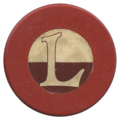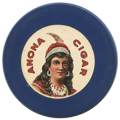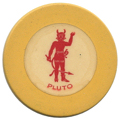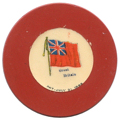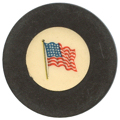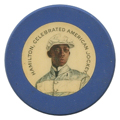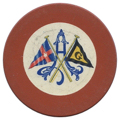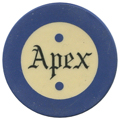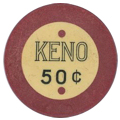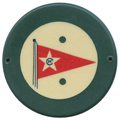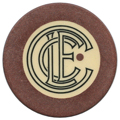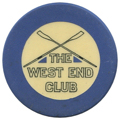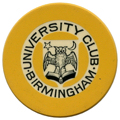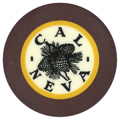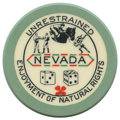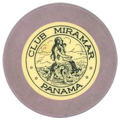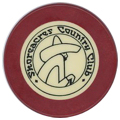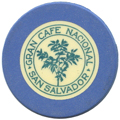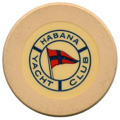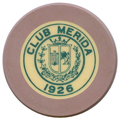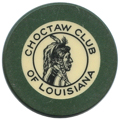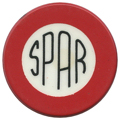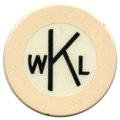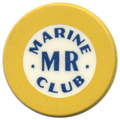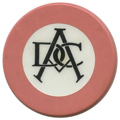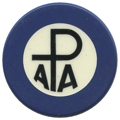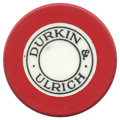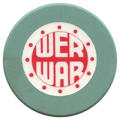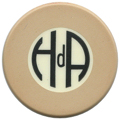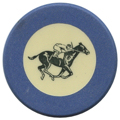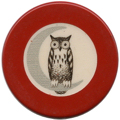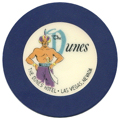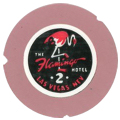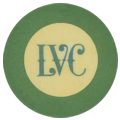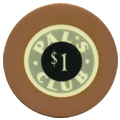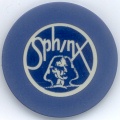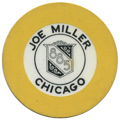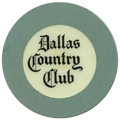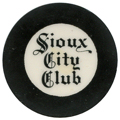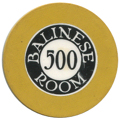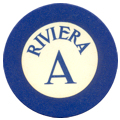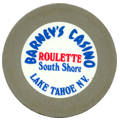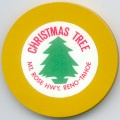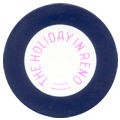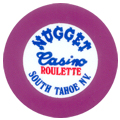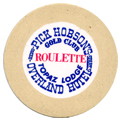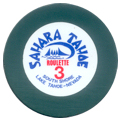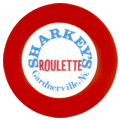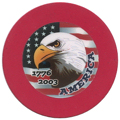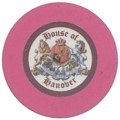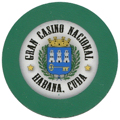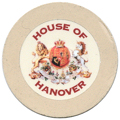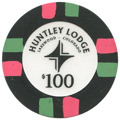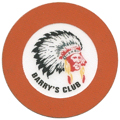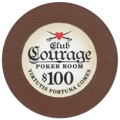|
|||||||
|
Crest & Seals
throughout the years There are very few records available that date when crest & seals ("C&S") were made. Howard Herz was able to photograph sample chip books that were kept in the United States Playing Card Company ("USPC") museum. Chips in these books were accompanied with information tags that provided, sometimes but not always, information as to date and destination. Between that and information I've gathered from other collectors and the internet, I have provided my best guesstimate as to when the different styles of crest & seals were made. Note that there will be exceptions to whatever is mentioned. |
|||||||
|
1900 to 1910
Inlays during
this period were made by Whitehead & Hoag
("W&H") of Newark, NJ. The
maker of the chip is unknown. I have no evidence, but it is my opinion
that the chips were made by USPC with inlays supplied by W&H. Note
that the size of the inlays vary in size. Several of the inlays were
also used by W&H in the making of
pinbacks. In particular, the "L"
(Lafayette University), Flag and
jockey were all featured in W&H's catalog
of pinbacks. Although W&H produced colorful lithographs, the inlays
had a habit of lifting at the edges. The inlay was a sandwich made of
paper (on which the litho was printed) and a protective celluloid covering.
As these dissimilar materials dried out, the celluloid would curl and lift
the inlay. This was never a problem for W&H in making pinbacks as on
the back there was a locking ring which held the litho sandwich in place.
|
|||||||
|
1911 to 1917
(exception: Toledo Club 1920) These chips, inlays included, were made
by USPC. It was quite natural for USPC to make it's own inlays has
they already had the machinery which they used in the production of
playing cards. Note that USPC chips have, for the most part, the same
size inlay. Also note that chips made during this time periods had
holes punched into the inlay. Having seen what happened to the inlays
supplied by W&H, I assume that the holes were there to provide more of a
grip. Unlike W&H, USPC's inlay was a sandwich of two pieces of
celluloid. Paper was not used.
|
|||||||
|
1918 to late 1940s
These chips were also made by USPC. The only difference I can detect
is that USPC stopped making holes in the inlay. The company
found it unnecessary to provide more 'grip' since the use of only celluloid in making
the inlay eliminated the tendency for the inlay to lift. The last
known (to me, anyway) USPC chips were made for
BPOE lodge 1747
Farmington, NM in 1948.
|
|||||||
|
1940s to
approximately 1950
These chips were made by the Burt Company of Maine. Chips are similar
to USPC chips with two major differences: 1) inlays are a bit smaller than
USPC inlays; and, 2) Celluloid, which was quite expensive, flammable and toxic to
work with, was replaced with plastic. Celluloid developed a patina and
darkened over time. The plastic inlays of Burt, for the most part,
remained clear as the white inlays below have shown.
|
|||||||
|
Approximately 1950 through
1960s In
these Burt chips, the protective plastic covering appears to be thinned out
quite a bit. During this time period Burt made many of the chips for
Nevada casinos. Unlike the earlier Burt chips which had rounded edges,
most of these later chips had square edges.
|
|||||||
|
1970s
Imagination and style appear to be in short supply in Burt crest and seals made
during this time period. These chips, in my opinion, are the least desirable
C&S.
|
|||||||
|
1990s to present
The following C&S were
made be Atlantic Standard Molding, the company that succeeded the Burt Co.
Atlantic Standard's web name is
PokerChipsOnline.com. Most chips made during this time period were made for personal use or
advertising. It is clear that the inlays by ASC are more colorful then
previous Burt chips.
|
